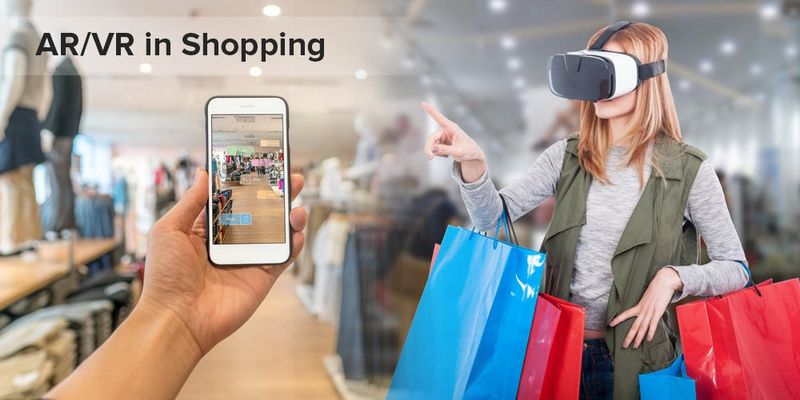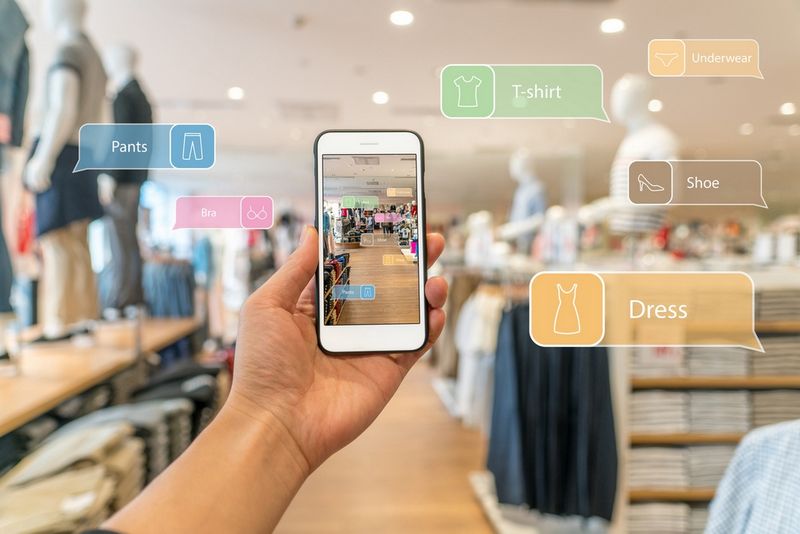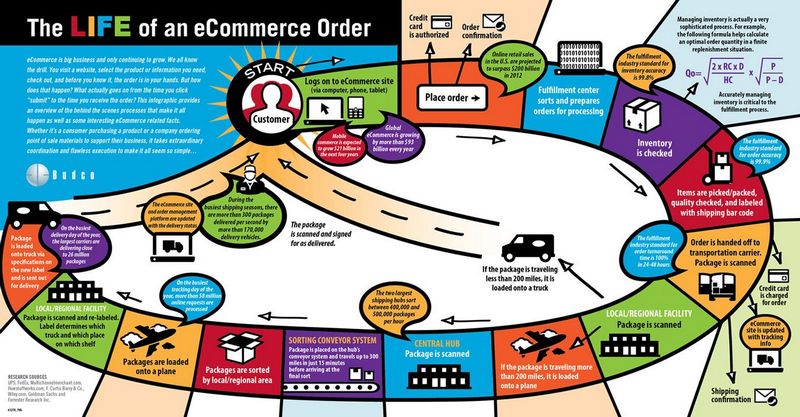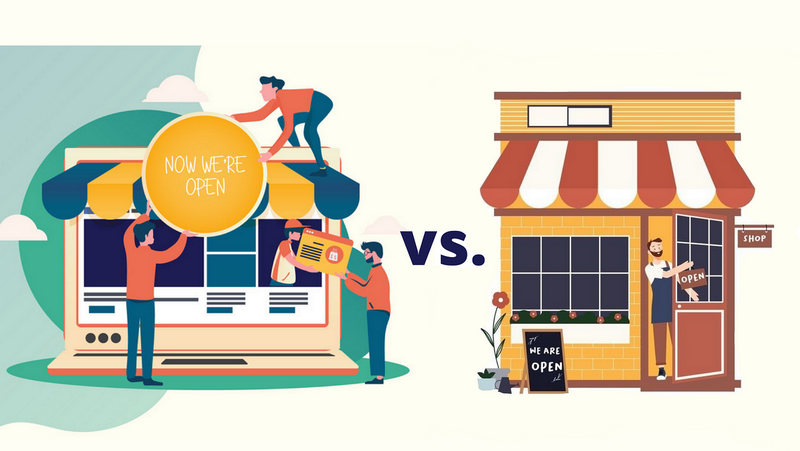- How AR and VR are Changing Consumer Shopping Experience
- The future of consumer shopping
- Interactive Virtual Shopping
- Augmented Reality for In-Store Experience
- Virtual Reality Showrooms
- Enhancing Product Visualization
- Immersive Shopping Experiences
- Personalized Recommendations with AR and VR
- Try Before You Buy with Virtual Reality
- AR and VR in E-commerce
- Revolutionizing Online Shopping
- AR and VR Integration with Mobile Apps
- Elevating Customer Engagement
- AR and VR for Better Decision Making
- The Role of Artificial Intelligence in AR and VR Shopping
How AR and VR are Changing Consumer Shopping Experience
In today’s era of retail innovation and digital transformation, retail technology has become an integral part of the customer shopping experience. One of the most exciting developments in this space is the emergence of augmented reality (AR) and virtual reality (VR) in the retail industry. These technologies have the potential to revolutionize the way consumers shop by providing immersive and interactive experiences that enhance customer engagement and drive sales.
AR shopping apps, for instance, are changing the way customers browse and purchase products online. By overlaying virtual images of products onto the real world, these apps enable customers to visualize how items will look in their own homes before making a purchase. This not only improves the accuracy of online shopping but also reduces the risk of returns and enhances customer satisfaction.
VR, on the other hand, takes the concept of immersive shopping to the next level. By creating virtual stores and virtual fitting rooms, retailers can provide customers with a unique and interactive shopping experience. Consumers can try on clothes virtually, explore a virtual store, and even interact with products in 3D. This not only makes the shopping process more engaging but also allows customers to make more informed decisions about their purchases.
These innovations in AR and VR are driven by a deeper understanding of consumer behavior and the desire to create a more personalized shopping experience. Ecommerce trends show that customers are increasingly looking for ways to connect with brands on a more emotional and experiential level. By leveraging AR and VR technologies, retailers can tap into this demand and provide customers with a shopping experience that goes beyond the traditional online shopping experience.
The future of consumer shopping
Digital transformation has revolutionized the retail industry, leading to new and innovative ways for consumers to shop. One of the most exciting developments in this space is the rise of immersive shopping experiences using virtual reality (VR) and augmented reality (AR) technologies. These technologies have the potential to transform the way customers engage with products and brands, creating a more personalized and interactive shopping experience.
Customer engagement is a critical factor in driving sales and building loyalty. AR and VR technologies enable retailers to create unique and memorable experiences that capture the attention and interest of consumers. By using AR shopping apps or visiting virtual stores, customers can virtually try on clothes, visualize furniture in their own homes, or even test drive virtual products before making a purchase.
Consumer behavior has also shifted significantly in recent years, with more people turning to online shopping and e-commerce. As a result, retailers are increasingly investing in retail technology to enhance the digital shopping experience. AR and VR can bridge the gap between online and physical shopping, allowing customers to experience products in a more tactile and interactive way.
One of the most exciting applications of AR and VR in retail is the virtual fitting room. This technology allows customers to try on clothes digitally, eliminating the need for physical changing rooms and reducing the time and effort involved in the traditional shopping experience. By simply uploading a photo or inputting body measurements, customers can see how different clothes would look on them, making it easier to find the perfect fit.
In addition to the convenience and personalized experience, AR and VR retail also offer benefits for retailers. These technologies enable retailers to showcase their products in a more visually appealing way, with 3D product visualization and virtual reality experiences. This not only helps to attract customers but also allows retailers to effectively communicate features and benefits of their products.
The future of consumer shopping lies in the integration of AR and VR technologies into the retail experience. By leveraging these technologies, retailers can create immersive and engaging experiences that differentiate them from their competitors and provide customers with a memorable shopping experience. As e-commerce continues to grow and evolve, it is essential for retailers to stay ahead of the curve and embrace the potential of AR and VR to enhance the customer experience.
Interactive Virtual Shopping
As the retail industry continues its digital transformation, augmented reality (AR) and virtual reality (VR) technologies are playing an increasingly important role in enhancing the customer experience. AR shopping apps and VR retail experiences are revolutionizing the way people shop by introducing interactive and immersive elements.
One of the key features of interactive virtual shopping is the use of augmented reality. With AR, customers can try on clothes virtually using a virtual fitting room. This allows them to see how different items of clothing will look on their body without physically trying them on. The virtual fitting room provides a realistic and engaging experience, increasing customer engagement and satisfaction.
Another aspect of interactive virtual shopping is 3D product visualization. Through VR technology, customers can explore products in a three-dimensional space, allowing them to examine them from different angles and get a better understanding of their features and functionality. This improves the online shopping experience by providing customers with more information and increasing their confidence in their purchasing decisions.
Immersive shopping experiences created with AR and VR technologies are becoming a significant trend in the ecommerce industry. With the ability to virtually try on products, visualize them in 3D, and experience them in a more interactive and engaging way, customers are more likely to make purchases and feel satisfied with their choices.
These innovations in retail technology and retail innovation are driven by a deep understanding of consumer behavior and a desire to provide a seamless and enjoyable shopping experience. By integrating AR and VR into ecommerce platforms, retailers can stay ahead of the competition and meet the expectations of modern customers who are looking for innovative and convenient ways to shop.
In conclusion, interactive virtual shopping is transforming the consumer shopping experience. With the advancements in AR and VR technologies, customers can now try on clothes virtually, visualize products in 3D, and enjoy immersive shopping experiences. These features enhance customer engagement, improve the online shopping experience, and drive customer satisfaction. As the ecommerce industry continues to evolve, the integration of AR and VR will continue to play a crucial role in shaping the future of retail.
Augmented Reality for In-Store Experience
Augmented reality (AR) is revolutionizing the retail industry by blending the physical and digital worlds to enhance the in-store experience. With the advancements in retail technology, retailers are leveraging AR to cater to evolving consumer behavior and improve the overall shopping experience.
One application of AR in the retail industry is through virtual stores. By using AR, retailers can create virtual stores where customers can browse and interact with products in a digital environment that mirrors a physical store. This allows customers to experience immersive shopping without the need to physically visit a brick-and-mortar store.
AR also plays a significant role in ecommerce trends by enabling virtual fitting rooms. With AR shopping apps, customers can virtually try on clothes, accessories, and even makeup products using their mobile devices. This not only eliminates the hassle of physical trial rooms but also boosts customer engagement and satisfaction.
The integration of AR and virtual reality (VR) in retail innovation creates a compelling shopping experience. By combining AR and VR, retailers can provide customers with 3D product visualization, allowing them to interact with and explore products in a more engaging and realistic way. This level of immersion enhances customer engagement and enables them to make more informed purchasing decisions.
In conclusion, augmented reality is reshaping the in-store experience in the retail industry. From virtual stores to virtual fitting rooms, AR is transforming the way customers interact with products and brands. By embracing AR/VR retail solutions, retailers can create a more immersive and personalized customer experience, driving customer engagement and ultimately increasing sales.
Virtual Reality Showrooms
In the world of ecommerce and online shopping, virtual reality (VR) has emerged as a game-changing technology that is transforming the retail industry. Virtual reality showrooms are becoming increasingly popular as a way to enhance the shopping experience and engage customers in new and exciting ways. With the help of VR, customers can step into a virtual store and explore products in a realistic and immersive environment.
AR shopping apps have already paved the way for retail innovation, allowing customers to try on virtual clothing and accessories through their smartphones. However, virtual reality takes this concept to the next level by creating a fully immersive shopping experience. Virtual reality showrooms enable customers to interact with products in a way that’s not possible through traditional online shopping. They can examine items from different angles, see how they fit in a room, and even test out functionality.
One of the key benefits of virtual reality showrooms is 3D product visualization. With VR, customers can view products in a realistic and interactive manner, allowing them to make better-informed purchasing decisions. This technology also opens up new opportunities for ecommerce trends such as virtual fitting rooms, where customers can virtually try on clothing and see how it looks on their own avatar.
Virtual reality showrooms are a prime example of the digital transformation happening in the retail industry. Retailers are using VR to create unforgettable shopping experiences that drive customer engagement and loyalty. By leveraging virtual reality technology, retailers can differentiate themselves from competitors and provide customers with a unique and personalized shopping experience.
This fusion of VR and retail technology is revolutionizing the way consumers shop and interact with brands. The immersive nature of virtual reality showrooms allows customers to feel more connected to the products and the brand, ultimately leading to increased sales and customer satisfaction. As more retailers adopt ar/vr retail solutions, the virtual store is becoming a key component of the future of online shopping.
In conclusion, virtual reality showrooms are transforming the consumer shopping experience by offering a realistic and immersive environment for customers to explore and interact with products. This innovative use of technology is driving digital transformation in the retail industry and providing customers with a unique and engaging shopping experience. With the continued advancement of virtual reality, we can expect to see even more exciting developments in ar/vr retail in the years to come.
Enhancing Product Visualization
Enhancing product visualization is a key component of the digital transformation in ecommerce and is paramount to improving the overall customer experience. Immersive shopping experiences powered by augmented reality (AR) and virtual reality (VR) technologies have revolutionized the way consumers engage with products, allowing them to visualize and interact with items in a virtual environment.
AR shopping apps and virtual reality retail experiences have paved the way for a new era of consumer engagement, providing a more interactive and personalized shopping experience. Through AR, customers can see how products would look in their own homes or on their bodies, helping them make more informed purchasing decisions.
With the rise of ecommerce and changing consumer behavior, retailers are increasingly leveraging AR and VR technologies to create virtual stores and enhance 3D product visualization. This innovative retail technology allows customers to virtually explore products, zoom in on details, and even try on clothes using a virtual fitting room.
By implementing AR and VR in their ecommerce platforms, retailers can offer a more immersive and engaging shopping experience, improving customer satisfaction and driving sales. These technologies provide consumers with a unique way to interact with products, giving them a better understanding of size, features, and customization options.
As AR and VR continue to evolve, they will undoubtedly shape the future of retail innovation. Retailers who embrace these technologies and incorporate them into their ecommerce platforms will have a competitive advantage in offering a seamless and captivating shopping experience.
- AR and VR technologies enhance 3D product visualization, allowing customers to interact with products in a virtual environment.
- AR shopping apps and virtual reality retail experiences provide a more immersive and personalized shopping experience.
- Virtual fitting rooms enable customers to try on clothes virtually, enhancing the online shopping experience.
- Implementing AR and VR in ecommerce platforms improves customer satisfaction and drives sales.
- AR and VR technologies will continue to shape the future of retail innovation and consumer behavior.
Immersive Shopping Experiences
Augmented reality (AR) and virtual reality (VR) are revolutionizing the way we shop, offering consumers immersive and interactive experiences that go beyond traditional retail innovation. As ecommerce continues to grow, AR and VR technologies are becoming increasingly prevalent, transforming the customer experience and taking online shopping to new levels of engagement.
AR shopping apps are a prime example of the digital transformation taking place in the retail industry. These apps utilize AR technology to allow customers to virtually try on clothing or visualize how furniture will look in their home. By overlaying digital images onto the real world, customers can get a realistic sense of how a product will look and fit before making a purchase. This not only saves time and reduces the risk of returns, but also enhances the overall shopping experience.

Another innovative use of AR and VR in retail is the virtual fitting room. This technology allows customers to try on clothes virtually, without the need to physically enter a changing room. By simply uploading a photo or inputting their body measurements, customers can see how different outfits will look on them in real time. This not only improves convenience and efficiency, but also boosts customer engagement and satisfaction.
Retail technology is continuously evolving, and AR and VR are at the forefront of the latest ecommerce trends. As customer behavior shifts towards online shopping, retailers are embracing these immersive technologies to create unique and memorable experiences for their customers. Whether it’s exploring a virtual store, interacting with 3D product visualizations, or trying on virtual clothes, AR and VR are revolutionizing the way we shop and shaping the future of retail.
Personalized Recommendations with AR and VR
AR and VR retail technologies have revolutionized the way we shop by providing immersive and personalized experiences. These technologies allow customers to explore virtual stores and try on products without leaving their homes, enhancing the overall shopping experience.
One of the key benefits of ar/vr retail is the ability to offer personalized recommendations. By analyzing customer data and preferences, virtual shopping apps can provide tailored suggestions, helping customers discover new products and make informed purchasing decisions.
Virtual reality technology, for example, can create a virtual fitting room where customers can try on clothes and accessories in a simulated environment. Through detailed 3D product visualization, customers can see how the items would look on them, helping them make confident buying choices.
Online shopping has transformed consumer behavior, and ar/vr retail takes it to the next level by providing immersive and interactive experiences. With augmented reality, customers can virtually place furniture in their homes or see how cosmetics would look on their faces before making a purchase.
Ecommerce trends are constantly evolving, and ar/vr retail is at the forefront of retail innovation. The integration of these technologies into customer experience not only increases engagement but also drives sales. The ability to provide personalized recommendations through ar/vr retail enhances customer satisfaction and loyalty.
As part of the ongoing digital transformation in the retail industry, ar/vr retail technologies are pushing boundaries and reshaping the way we shop. The combination of personalized recommendations and immersive shopping experiences offered by ar/vr retail is a game-changer, providing customers with a more enjoyable and convenient shopping journey.
Try Before You Buy with Virtual Reality
The customer experience is rapidly evolving with the advancement of retail technology, and one of the most exciting developments is the integration of AR/VR into the shopping process. AR/VR retail technology allows customers to have a more immersive and interactive shopping experience, particularly in the realm of 3D product visualization.
With AR shopping apps and virtual stores, customers can now visualize and interact with products in a virtual space before making a purchase. This not only enhances the online shopping experience but also bridges the gap between offline and online retail. Ecommerce platforms are leveraging AR/VR technology to create virtual fitting rooms, where customers can virtually try on clothing and accessories before buying.
This retail innovation has a profound impact on consumer behavior, as it empowers customers to make more informed and confident purchasing decisions. By experiencing products in a virtual reality environment, customers can evaluate the look, fit, and functionality of items without physically being present in a store. This eliminates the hesitation and uncertainty that often accompanies online shopping.
Augmented reality (AR) and virtual reality (VR) are driving customer engagement and enhancing the overall shopping journey. As customers explore virtual stores, browse through products, and visualize them in detail, they become more involved in the shopping experience. The digital transformation brought by AR/VR in the retail industry has revolutionized the way customers interact with brands and products.
The immersive shopping experience created by virtual reality resonates with customers and helps build brand loyalty. Through VR, customers can have a lifelike shopping experience, from exploring a virtual store layout to virtually trying on clothes and accessories. This creates a sense of excitement and personalization, making customers feel more connected to the brand and increasing the likelihood of making a purchase.
In conclusion, the integration of AR/VR into the retail industry has transformed the customer shopping experience. With the ability to try before you buy using virtual reality, customers can make more confident purchasing decisions and enjoy a more interactive and immersive shopping journey. This retail innovation is driving customer engagement, enhancing brand loyalty, and propelling the industry forward.
AR and VR in E-commerce
AR and VR technologies have revolutionized the retail industry, enhancing the shopping experience for customers and driving digital transformation in the world of e-commerce. Retailers are increasingly integrating AR and VR into their businesses, leveraging these innovative technologies to improve customer engagement and create immersive shopping experiences.
Augmented reality (AR) has become a powerful tool for enhancing the shopping experience. By overlaying digital information onto the real world, AR shopping apps allow consumers to visualize products in their own environment before making a purchase. This technology enables virtual product trials, giving customers the ability to see how furniture, clothing, or other items will look and fit in their homes or on themselves. AR also allows for interactive experiences, such as trying on virtual makeup or virtually placing items in a digital shopping cart.
Virtual reality (VR) takes the shopping experience to a whole new level by creating fully immersive virtual environments. With VR, customers can explore virtual stores and browse through products as if they were physically present. The use of VR in e-commerce provides a unique opportunity for retailers to showcase their products in a visually stunning and interactive way, significantly enhancing customer engagement and increasing sales.
AR/VR retail technologies have also impacted consumer behavior and preferences. With the ability to visualize products in 3D and experience them in a virtual store, customers are more confident in their purchasing decisions. They can make more informed choices, reducing the need for returns and increasing customer satisfaction. Additionally, the integration of AR and VR in e-commerce has opened up new possibilities for personalized shopping experiences, such as virtual fitting rooms that enable customers to try on clothes without physically being in a store.
Overall, AR and VR technologies continue to shape the future of e-commerce, driving customer experience and transforming the way we shop online. Retailers need to embrace these evolving trends and invest in AR/VR retail solutions to stay competitive in the digital age, offering their customers a seamless and engaging shopping experience.
Revolutionizing Online Shopping
In the dynamic world of retail technology, virtual fitting rooms and AR/VR retail innovation are transforming the consumer shopping experience. With the rise of ecommerce and changing consumer behavior, retailers are adopting AR and VR technologies to enhance customer engagement and provide an immersive shopping experience.
Virtual reality (VR) and augmented reality (AR) shopping apps allow customers to virtually try on clothing, accessories, and even cosmetics before making a purchase. This not only saves time and eliminates the need for physical fitting rooms, but also provides a more personalized and enjoyable shopping experience for customers.
The integration of AR and VR in ecommerce has revolutionized the way consumers perceive and interact with products. The 3D product visualization enables customers to view products from all angles, zoom in to see the details, and even interact with them virtually. This level of digital transformation in online shopping has greatly enhanced customer experience and influenced their purchasing decisions.
Moreover, AR/VR retail technology is paving the way for virtual stores, where customers can browse and purchase products in a virtual environment. This innovative approach to online shopping bridges the gap between physical stores and ecommerce, providing the convenience of online shopping with the tactile experience of in-store browsing.
As ecommerce trends continue to evolve, AR and VR are set to play a significant role in shaping the future of retail. Retailers who embrace these technologies and incorporate them into their online platforms will not only stay ahead of the competition but also meet the increasing demands of tech-savvy consumers who seek immersive and interactive shopping experiences.
AR and VR Integration with Mobile Apps
The integration of AR and VR technologies with mobile apps is revolutionizing the way consumers shop. These technologies are transforming the traditional retail experience into an immersive shopping journey that provides customers with a new level of engagement and interaction.
Retail innovation has been one of the driving forces behind the adoption of AR and VR in the retail industry. These technologies offer retailers the ability to create 3D product visualizations, allowing customers to see a virtual representation of a product before making a purchase. This not only enhances the customer experience but also helps to bridge the gap between online and offline shopping.
The integration of AR and VR in mobile apps has also played a significant role in reshaping consumer behavior when it comes to shopping. With the rise of online shopping and the increasing demand for convenience, virtual reality offers customers the opportunity to explore a virtual store and make purchases without leaving the comfort of their own homes. This has led to a shift in customer expectations and preferences, as they now expect a seamless and immersive shopping experience.
AR shopping apps have also gained popularity among consumers due to their ability to enhance customer engagement. By overlaying digital information onto the physical world, augmented reality allows customers to interact with products in a more interactive and personalized way. For example, virtual fitting room apps enable customers to try on clothes virtually, helping them make more informed purchasing decisions.
The integration of AR and VR with mobile apps is a key element of digital transformation in the retail industry. As ecommerce trends continue to evolve, retailers need to embrace these technologies to stay competitive and meet the changing demands of customers. By leveraging the power of AR and VR, retailers can create a unique and memorable shopping experience that goes beyond traditional online shopping.
Elevating Customer Engagement
In the era of retail innovation, customer engagement has become a key focus for businesses worldwide. With the advent of 3D product visualization and the growth of ecommerce, understanding consumer behavior and ecommerce trends has never been more important. As a result, immersive shopping experiences have emerged as a powerful tool in enhancing customer experience.
AR/VR retail has revolutionized the shopping experience, bringing virtual reality and augmented reality into the retail space. By utilizing virtual reality, retailers can create virtual stores that provide a unique and immersive shopping experience for customers. These virtual stores allow customers to browse products, interact with them in a virtual environment, and make purchases all without leaving their homes.
One of the key benefits of AR/VR retail technology is the ability to offer 3D product visualization. This means that customers can view products in a realistic and detailed manner, allowing them to make informed purchasing decisions. From virtual fitting rooms that allow customers to try on clothes online, to interactive product demonstrations that showcase the features and functionality of a product, AR/VR technology is transforming the way we shop.
With the rise of online shopping, customer engagement has become even more crucial. With the help of AR/VR technology, businesses can create interactive and engaging shopping experiences that capture the attention of customers and keep them coming back for more. By offering personalized product recommendations, virtual assistants, and interactive product catalogs, businesses can enhance customer engagement and provide a more personalized shopping experience.
In conclusion, AR/VR retail technology is playing a significant role in elevating customer engagement. By leveraging the power of virtual reality and augmented reality, businesses can create immersive shopping experiences that are tailored to individual customer preferences. These experiences not only enhance customer engagement but also drive sales and foster brand loyalty. In the age of digital transformation, incorporating AR/VR technology into retail strategies is essential for businesses looking to stay ahead of the competition.
AR and VR for Better Decision Making
In the rapidly evolving world of retail innovation, AR and VR are playing a significant role in transforming the way consumers make decisions. Through ar/vr retail technologies, consumers can now experience 3D product visualization, allowing them to see and interact with virtual representations of products before making a purchase. This is a powerful tool in the era of digital transformation, as it enhances the customer’s ability to make informed choices.
Virtual stores and ecommerce platforms are taking advantage of AR and VR to provide an immersive shopping experience. By integrating ar/vr retail technology, these platforms can create virtual environments where customers can browse, select, and visualize products as if they were in a physical store. This not only increases customer engagement but also enables them to make better decisions by experiencing the product in a realistic way.
One area where AR and VR are particularly beneficial is in the realm of virtual fitting rooms. Retail technology has advanced to the point where customers can now try on clothes virtually, eliminating the need to physically try on items. With AR shopping apps and virtual reality, customers can see how different garments fit and look on their own digital avatars, helping them make better decisions when shopping online.
By leveraging AR and VR, retailers are tapping into the potential of customer experience. These technologies allow for personalized and interactive experiences that cater to individual needs and preferences. They enable consumers to explore products from different angles, access additional information, and even compare items side by side. This level of immersion and interactivity influences consumer behavior and ultimately leads to more confident and informed purchase decisions.
The Role of Artificial Intelligence in AR and VR Shopping
Artificial Intelligence (AI) plays a crucial role in enhancing the consumer shopping experience in the realm of augmented reality (AR) and virtual reality (VR). One of the key areas where AI is making a significant impact is in the development of virtual stores and virtual fitting rooms.
Virtual stores allow customers to browse and interact with products in a digital environment, providing a more immersive and personalized shopping experience. AI-powered algorithms analyze customer behavior and preferences to recommend products that align with their interests, leading to higher customer engagement and increased sales.
Similarly, virtual fitting rooms leverage AI technology to enable customers to try on clothes or accessories virtually, eliminating the need for physical trial rooms. AI algorithms analyze customer body measurements and suggest accurate size and fit recommendations, improving the online shopping experience and reducing the risk of returns and exchanges.
Moreover, AI plays a vital role in the overall digital transformation of AR/VR retail. By leveraging AI, retailers can gather and analyze vast amounts of data on consumer behavior, preferences, and trends. This data-driven approach enhances decision-making processes, enables better inventory management, and facilitates targeted marketing campaigns.
AI also powers 3D product v







